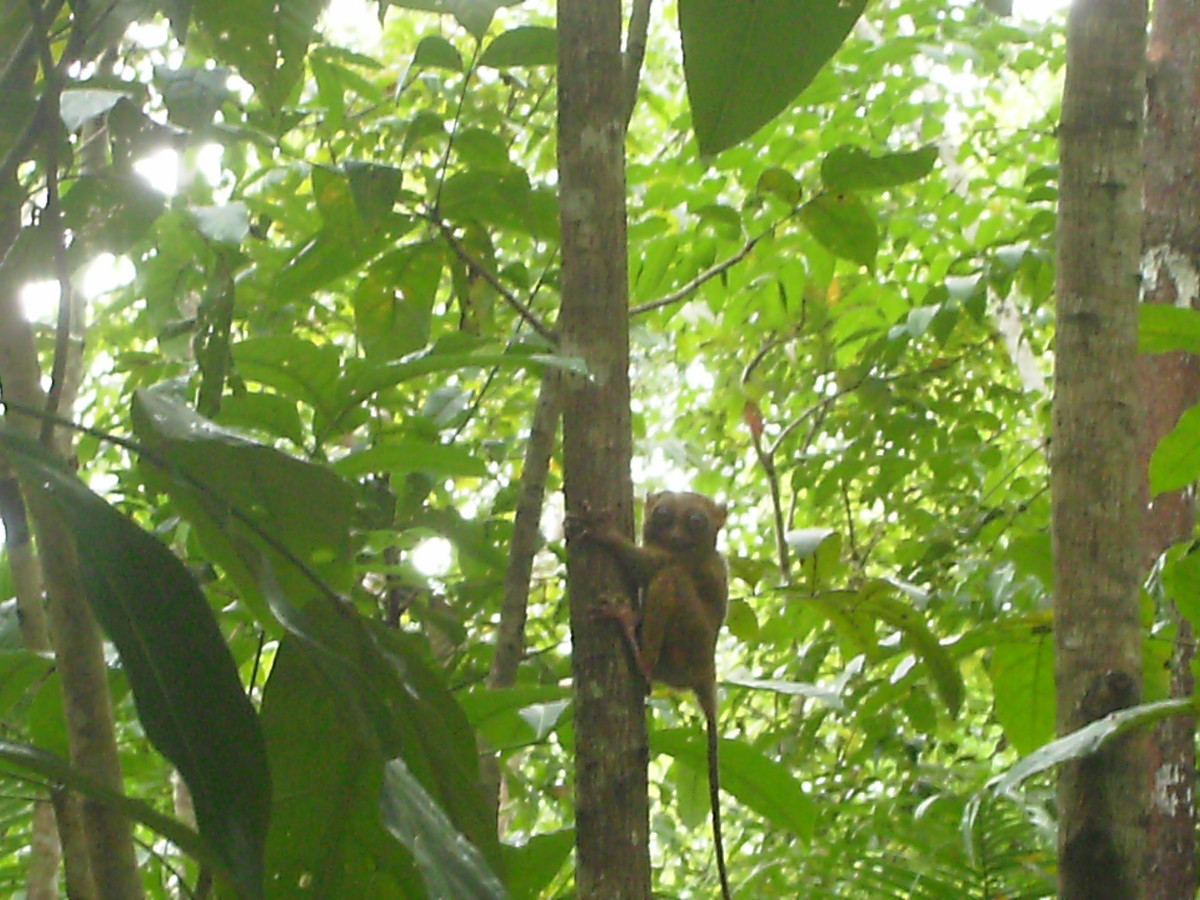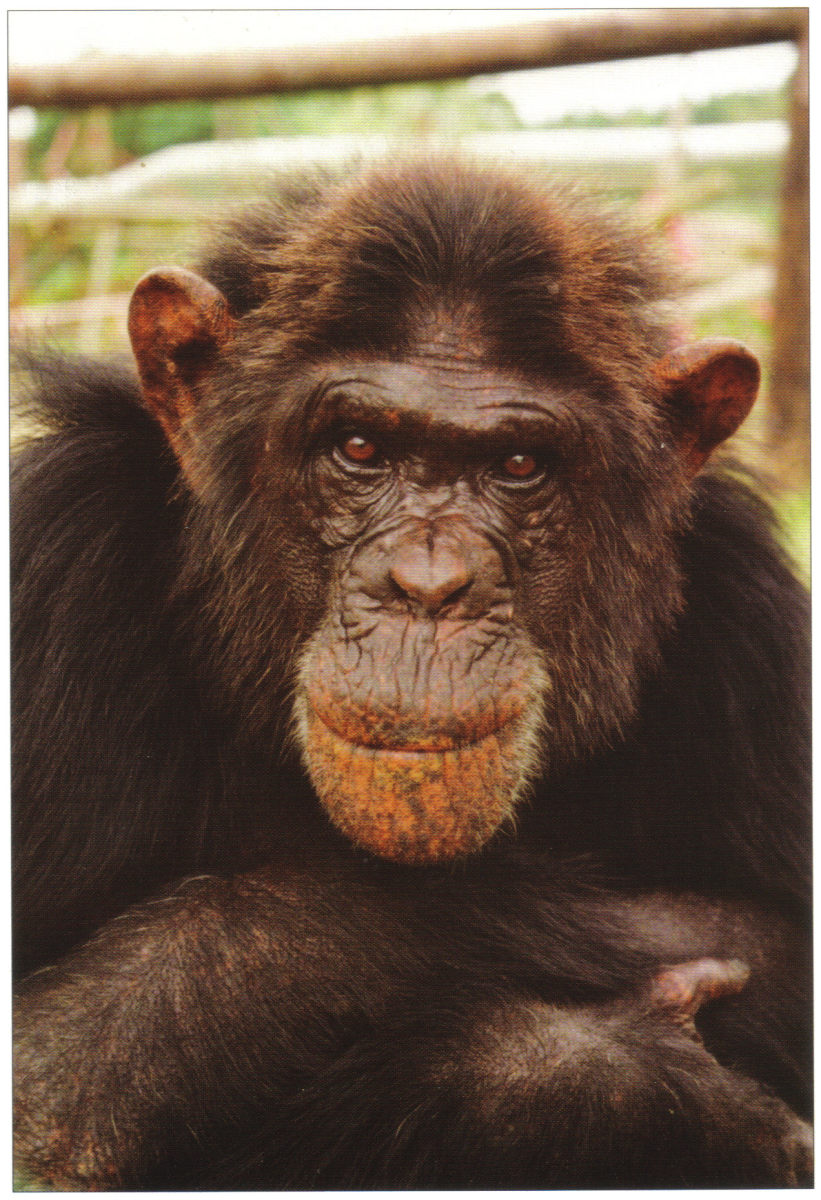Observing Primates at the Zoo
Observations of Primates
On April 13, 2010, I observed three species of primate at the Sacramento Zoo. My first observation was the prosimian ring-tailed lemur; second was the ape chimpanzee; third was the new world monkey white-faced saki. Each primate was enclosed in a cage and provided with a diet by zoo keepers, as well as whatever they could forage inside their habitats. I had prepared myself to see a myriad of depressed and depressing primates waiting out their days in desperate incarceration. To my surprise, most were full of life and seemed to be going about their business in a fairly normal way. Despite the unnatural setting, I was able to make many interesting observations and found some of my preconceived notions of primate behavior and zoos in general to be false.
Upon reaching the ring-tailed lemur enclosure, I found a group of three huddled together on a branch: sleeping. The skies were overcast and the weather was chilly, so I assumed they were gathered for warmth and would be more active once the clouds broke. I was surprised by the lemur’s seemingly familial behavior. Their sleeping in a huddle made them seem very loving to one another, although it was likely inspired by the need for warmth. I decided to leave the exhibit and return later, hopeful that the weather would change and they would become more active. Upon returning over an hour later, one of the ring-tailed lemurs had woken up and was eating leaves and an unknown food left on the ground by a zoo keeper. The other two ring-tailed lemurs continued to sleep in their huddled position. The eating ring-tailed lemur was competing for food with a profiteering squirrel. The squirrel would squeeze through the holes in the chain-linked fence and pilfer a piece of food. The lemur appeared annoyed by this and seemed to chase the squirrel out of the enclosure whenever he spotted the thief. It was clear that the opportunistic squirrel was well adapted for the zoo’s environment and could potentially travel from cage to cage, feasting on the food intended for the inhabitants. This cat and mouse (lemur and squirrel) game continued for approximately five minutes, until the eating ring-tailed lemur returned to the sleeping pair and rejoined the loving huddle.
The chimpanzee exhibit was far and away the most popular exhibit at the zoo and it was no wonder as to why. I identified two adult males and three adult females in the enclosure, which included hammocks, artificial termite mounds, dozens of ropes, and even a waterfall. It reminded me of a playground I might have dreamt of when I was a kid. I had assumed the chimpanzees would appear miserable inside of a zoo, but to the contrary they seemed to be having a great time! A stark contrast to the ring-tailed lemurs, they were actively swinging and climbing from rope –to-rope in what seemed like death-defying acrobatic displays. One particularly interesting adult male became my focal animal and I watched him swing down from high atop a hammock, retrieve a small cardboard box, climb to the waterfall, and utilize the cardboard box as a sort of cup! Although I was aware of chimpanzee’s tool-usage, it was truly amazing to see this in action. He drank from the waterfall again and again and finally dropped the cardboard box to the ground. Another chimpanzee retrieved the same cardboard box and proceeded to use it as a drinking vessel as well. I imagine this learned behavior had been passed on from ape to ape during their time together in the enclosure.
The last exhibit I observed was the new world monkey, the white-faced saki. I knew very little about this specific monkey and had few preconceptions of their behavior. However, after observing the ring-tailed lemurs, I foolishly assumed they would be equally as friendly to one another. Instead, the three adult males and single adult female were fighting one another over food. The male white-faced sakis were true to their namesake and were mostly black with a white face. The female white-faced sakis had a sort of salt and pepper coloration covering their bodies and were easily identified. The adult males seemed to be harassing the female if she came near the food, sometimes striking out at her if she got too close. The other two would take advantage of the aggressive male’s absence and help themselves to more of the food. This seemingly selfish behavior continued unchanged for the entirety of my observation. This behavior intrigued me, and I wondered if it would be the same in the monkey’s natural environment.
My understanding of the three specific species I observed was positively changed by attending the Sacramento Zoo. I saw ring-tailed lemurs huddling together for the shared goal of warmth and competing for food with a well-adapted squirrel. I witnessed amazingly human-like tool usage in the chimpanzee exhibit, as well as a comforting playfulness. I observed selfish competition for food and gender discrimination in the white-faced saki habitat. I can only assume these observed behaviors would largely mirror those seen in the wild, but until I can afford the trip to Madagascar, northern South America, or Central Africa, the zoo will have to do.









